Back in the USA.
People who have visited the capital of Texas (and many who have not) are likely familiar with its famous marketing slogan.
(From acrossthemargin.com).
The principal intent of “Keep Austin Weird” is promoting local independently owned and operated businesses. In terms of actual weirdness, however, I’m not sure it has any real edge on the metropolitan area of Salt Lake City, Utah – a fact that bubbled to the surface when I began reading the posts recounting my visit there late in the spring of 2017. I suspect this isn’t the first description that would come to mind to describe a city that is probably best known for its Tabernacle and that tabernacle’s choir and for being the home of the Church of Jesus Christ of the Latter Day Saints that most colloquially call the Mormon Church. But let’s look a little closer.
Details I’m skipping this time around.
Let me start with the caveat that not everything I’m including in this post – whether in this section or in detail below – is within SLC’s city limits. Most are. But some are in adjacent communities and everything is within about 25 miles of Temple Square. I’ll begin in the suburb of Herriman where I went to take a picture of this house
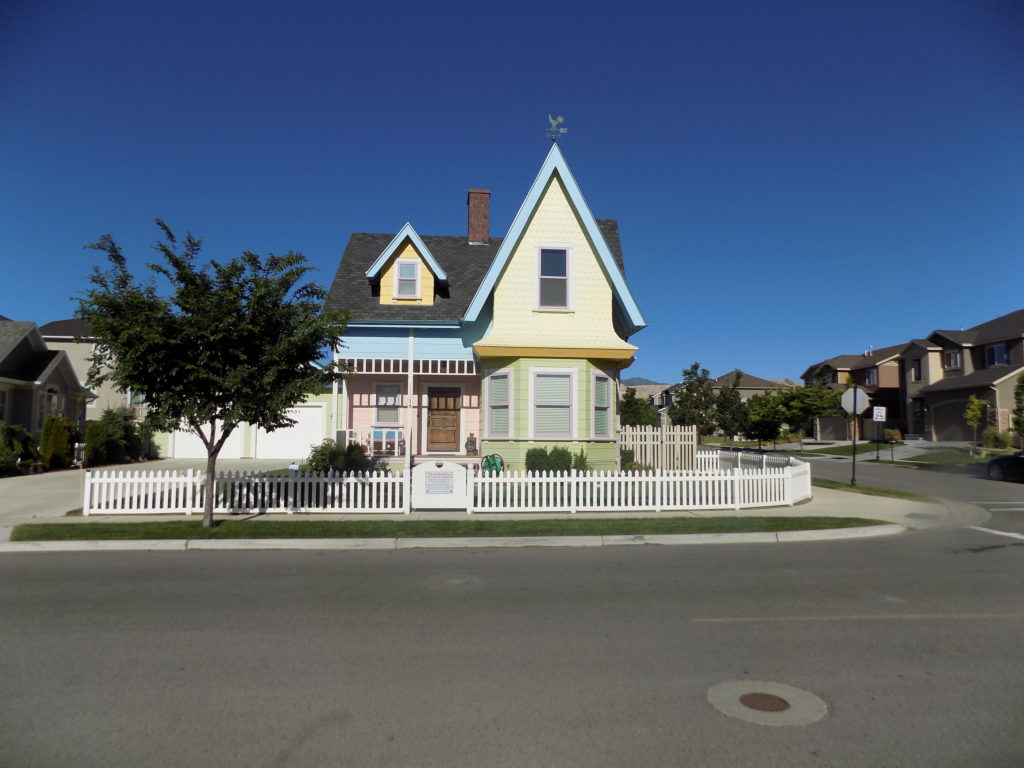
modeled after the house from the Disney animated film Up! Look at the houses nearby and you have to score at least one point in the “Hmmmmm, that’s a bit weird,” scale.
Visit the State Capitol and on the outside you can see the beehive sculpture
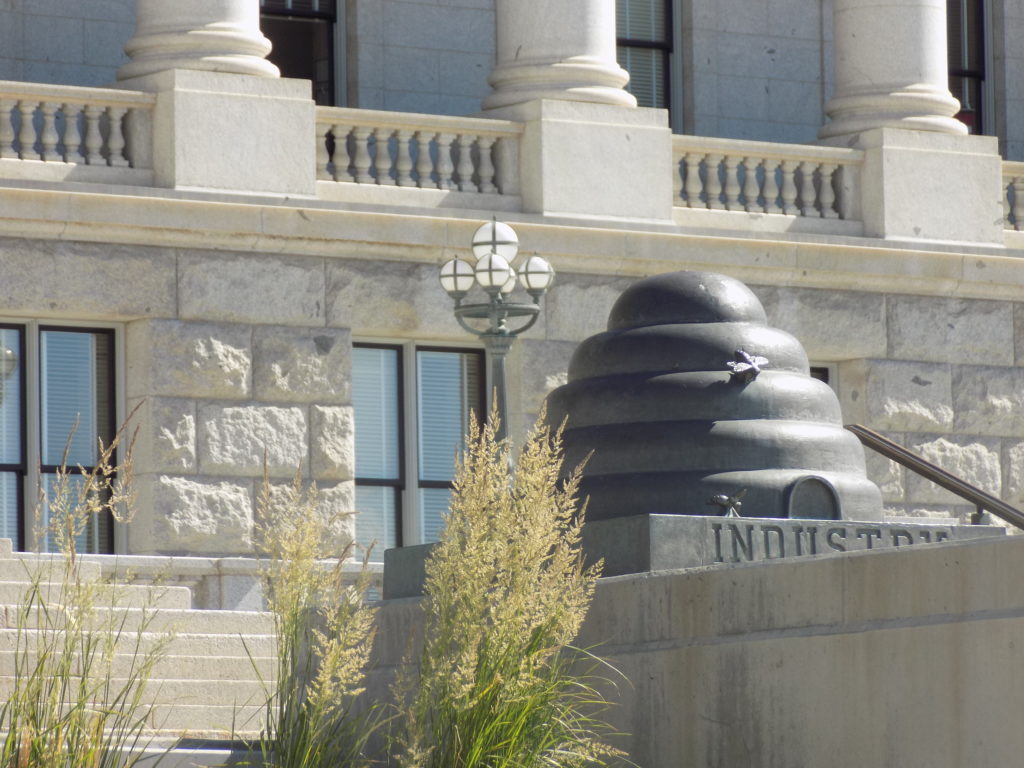
and on the inside, you’ll find a statue of one Philo T Farnsworth who, for all intents and purposes, invented television.
Okay, I’ll grant that neither Philo nor the beehive score particularly high on the weirdness scale but might you find it odd that the first Kentucky Fried Chicken restaurant is in SLC? Technically it’s in Murray but it was a restaurateur named Pete Harman who not only gave the world the concept of the KFC bucket but also christened the recipe developed by Harland Sanders as Kentucky Fried Chicken. I tell that story here.
Heading back into SLC, you can visit “This is the Place” – the spot where, according to legend, Brigham Young stopped, lifted himself from his sickbed, looked out of the wagon that was carrying him and said, “It is enough. This is the right place.” (Although some accounts report him as saying, “This is the right place. Drive on.”) In this park you’ll also find monuments to the Pony Express, the Mormon Battalion, and not too far away, a historical marker about the Donner-Reed party.
Still need convincing? Okay. How about a visit to Saltair – that opened in 1893 near the town of Magna
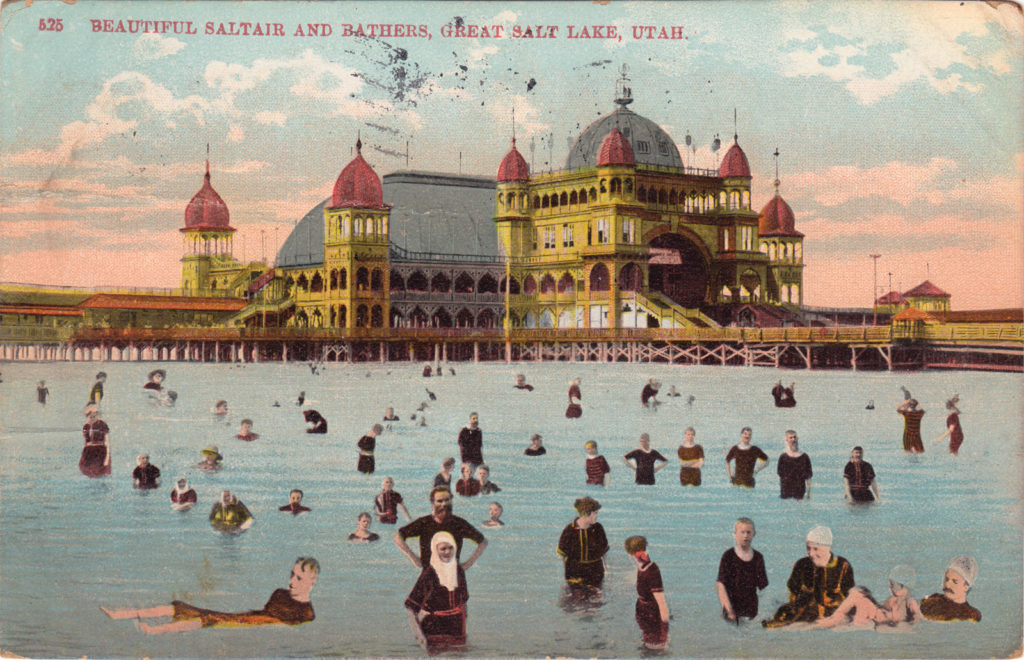
and that was conceived as the Western counterpart to Coney Island. Or go to Valley View Cemetery to find the grave of Steven Allan Ford. Ford was a licensed minister of the Temple of the Jedi Order who, on September 5, 2008, presided over his elder brother’s wedding, making it the first such ceremony performed by a Jedi Minister in Utah. Yes, the locale of the world headquarters of the LDS Church recognized a wedding performed by a Jedi minister.
Still not feeling the weirdness? Then let me point you to some of the places I wasn’t able to visit. Start with the Summum Pyramid or as it’s also known, The Pyramid of Modern Mummification. You could have gone to the now permanently closed Ralphael Plecia’s Christian School, and, while you’re at it, don’t forget the Apocalrock (search it on Facebook or YouTube).
Keeping it weird at the circle of standing stones.
But wait. There’s still more. It’s time to actually visit a Salt Lake City curiosity – the Gilgal Garden. Here’s what I wrote at the time:
According to the Jewish Bible, Gilgal is the name of the place where Joshua settled the tribes of Israel when he led them into the “Promised Land” after taking over leadership of that exodus following Moses’ death. There is a Neolithic site near Jericho that archaeologists have named Gilgal One. (Gilgal, by the way, translates from Hebrew as “circle of standing stones.”)
The Gilgal Sculpture Garden in Salt Lake City is the creation of Thomas Battersby Child, Jr. who was a Bishop of the 10th LDS Salt Lake Ward. The idea came to him as a way of manifesting his life-long spiritual quest. He began working on his sculpture garden in 1947 when he was 57 years old and that work would consume most of the remainder of his life (he died in 1963) and much of his savings.
Gilgal Sculpture Garden contains 12 original sculptures
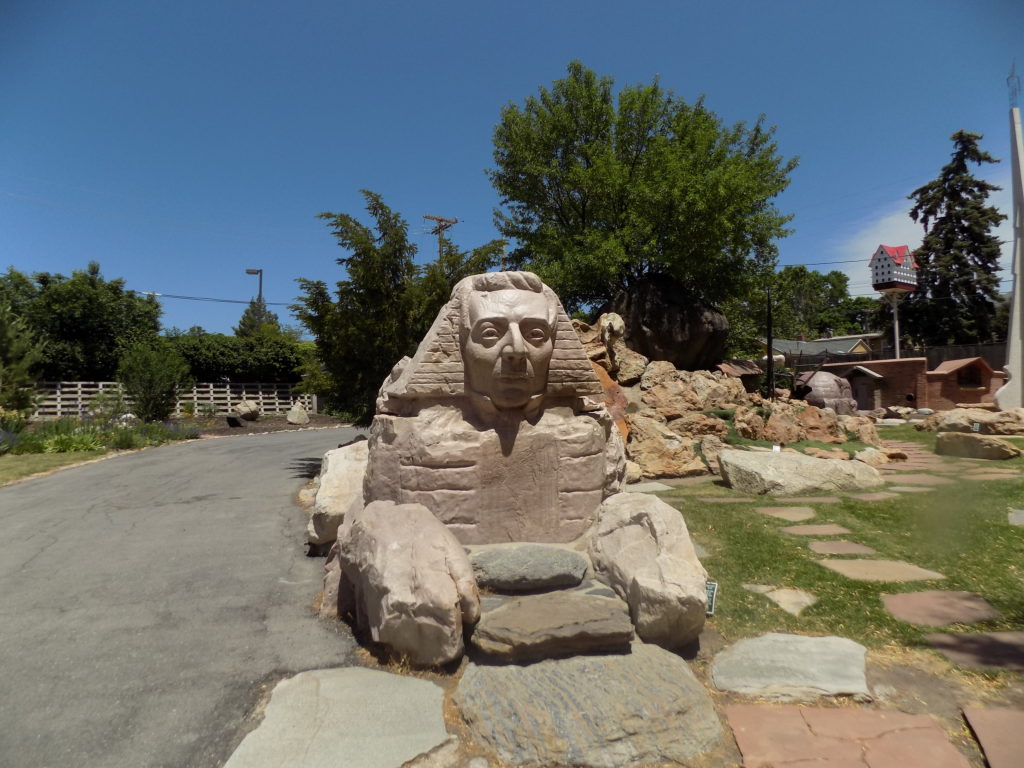
and over 70 stones engraved with scriptures, poems, and literary texts and for Child, each represents an idea that carries spiritual truth. In constructing the garden and opening it for free to the public, he aimed to inspire viewers to ponder “the unsolved mysteries of life” and struggle to find their own answers.
He expected that many people would find Gilgal Garden strange (more photos at this link) but wanted it to challenge every visitor’s personal vision of spirituality. “You may think I am a nut,” he once said, “but I hope I have aroused your thinking and curiosity.”
One article on Gilgal Garden calls it, “significant as the only identified ‘visionary art environment’ in Utah.”
One last stop and a touch of normalcy on a Friday night in SLC.
I’ve loved the sport of baseball most of my life and have mentioned my baseball stadium tours elsewhere in this series so when I learned that the AAA Salt Lake City Bees were hosting the Albuquerque Isotopes, my Friday night plans were set.
(The Isotopes, by the way, have one of my favorite sports team nicknames because of its origin story. In the 4 March 2001 episode of The Simpsons, Homer attempted to thwart a planned move of the Springfield Isotopes to Albuquerque by going on a hunger strike that ultimately failed.
When the local paper held an online poll to choose a name for the Calgary Cannons who relocated to Albuquerque in 2003, Isotopes received more than 80,000 of the 120,000 votes cast.)
Although the game itself, an 11-1 thrashing of the home team, was rather disappointing, Smith Stadium is in a lovely setting
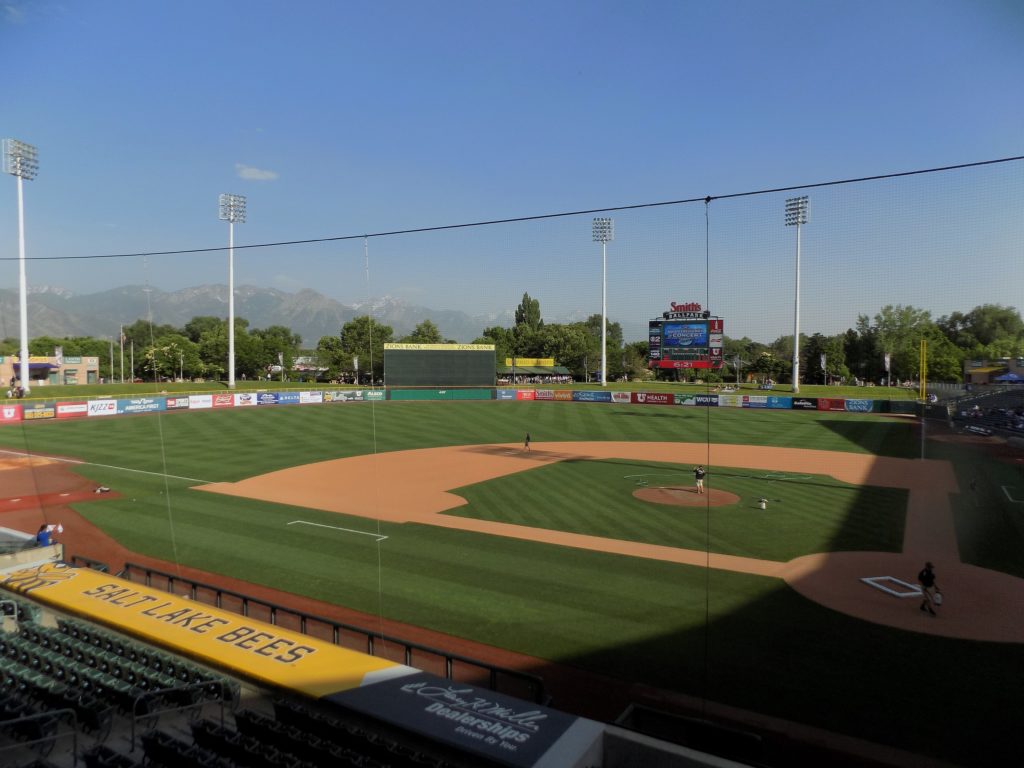
and while it’s unusual for me to leave a game early, with no rooting interest, a lopsided score, and facing a four plus hour drive to Arches National Park and nearby Dead Horse Point State Park Saturday, I headed out after eight innings and back to the hotel for a decent night’s sleep.
